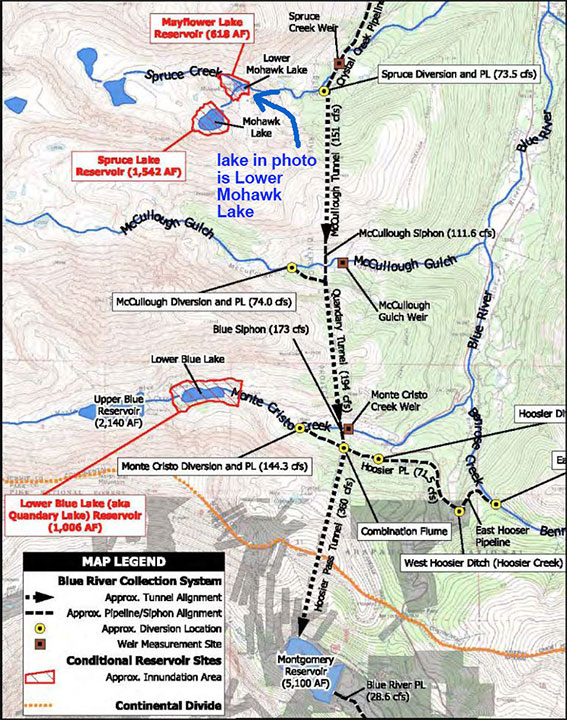This week, Save The Colorado launched a “Defend The Fens” effort to counter an increasing number of new dam proposals that would destroy or drown imperiled and irreplaceable fens in Colorado’s Eagle and Summit counties.
Fens are ancient wetlands that have an enormous capacity to fight climate change by storing carbon as well as being “hotspots” of biodiversity. Several proposed new dam projects are taking direct aim at high country fens including the Whitney Reservoir in Eagle County, the Clinton Reservoir in Summit County, and three proposed new dams on upper tributaries of the Blue River in Summit County.
“I’ve hiked and photographed all of these watersheds and admired their wild beauty,” said John Fielder, a Summit County nature photographer and conservationist. “The proposals to destroy these fens and their unique ancient attributes must be countered with an aggressive fight.”
The U.S. Forest Service states on its website that, “Globally, fens store more than 30% of soil carbon, representing a Carbon stock of 400–550 Gt (gigatons) which equates to 10-14 times the total amount of emissions produced by humans from all sources (factories, cars, etc.).” USFS also states that fens are “hotspots of biodiversity…often home to rare plants, insects, and small mammals.”

To protect fens, the U.S. Fish and Wildlife Service and the Environmental Protection Agency drafted a “fen policy” in 1996 that was amended in 1999. The policy determined that fens are irreplaceable resources because their soils take so long to regenerate, further stating, “On-site or in-kind replacement of peatlands [fens] is not possible.”
Three proposed projects would drown and/or destroy several acres of high-altitude fens.
First, the proposed “Whitney Reservoir” in Eagle County – a project of Colorado Springs and Aurora – would build a new large dam in the Homestake Valley to divert up to 20,000 acre feet of Colorado River basin water from the West Slope to the Front Range. Both the dam and diversion would destroy and/or drown fens. The project has been proposed for decades and recently concluded test drilling for proposed dam sites. The project has not yet triggered the federal National Environmental Policy Act process, but is expected to soon (see story in Aspen Journalism here). Further, the proposed Whitney Reservoir would butt up against the Holy Cross Wilderness Area in the Homestake Creek Valley, a major point of contention with many opponents.
Second, the proposed Clinton Reservoir enlargement in Summit County – a project of the Clinton Ditch and Reservoir Company – has triggered its federal permitting process (see U.S. Army Corps of Engineers website here) – and would “result in the inundation and loss of 3.02 acres of wetlands, including 1.27 acre of fen wetlands, and 85 linear feet of Clinton Creek (a perennial stream).”
Finally, the City of Colorado Springs is proposing three new dams on the upper tributaries of the Blue River in Summit County – with dams 50 feet tall, ~90 feet tall, and ~85 feet tall – that would further drown and destroy fens as well as divert new Colorado River basin water from the West Slope to the Front Range. The project is still trying to obtain water rights through the State of Colorado water court system – several “opposers” including the Town of Breckenridge and Summit County are in court against the project (see story in Aspen Journalism here). Further, these proposed new dams would all be inside of Colorado’s newest federally protected landscape, the Camp Hale-Continental Divide National Monument. (Lower Mohawk Lake would be drowned and destroyed by a ~85 foot tall dam — see a hi-resolution John Fielder image of Lower Mohawk Lake by clicking here).
“To destroy the irreplaceable is not just an affront to Nature, but is an affront to ancient wisdom,” said Gary Wockner of Save The Colorado. “Our organization is rallying against these dam projects and will try to fight them through every permitting process available.”
See map of proposed Colorado Springs dams in the Upper Blue River Watershed below.

Gary Wockner, PhD, is a scientist and conservationist based in Colorado. Follow him on Twitter, @GaryWockner. Learn more at savethecolorado.org
